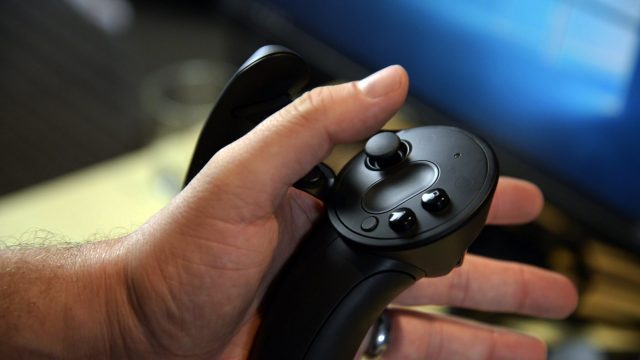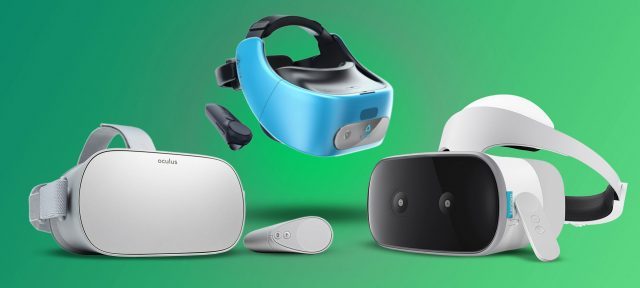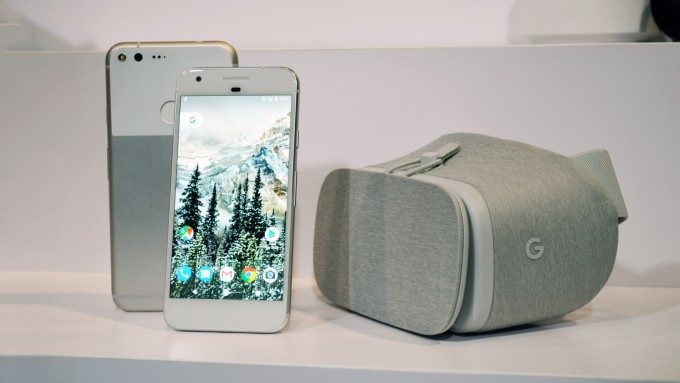Knuckles – An Important Step for Unified Input

Valve’s ‘Knuckles’ VR controllers are a total rethinking of the the ‘wand’ controllers that debuted with the HTC Vive. They support a slew of new capabilities, including individual finger tracking and a force sensor, allowing for natural gripping and even the ability to detect how hard the user is squeezing the controller.
While the original Vive controllers had one large trackpad which also acted as a button, Knuckles introduces two face buttons and a thumbstick, alongside a much smaller trackpad.
When it comes to input and control schemes, Knuckles is significantly more in line with Oculus Touch, which also features an easy to use grip, two face buttons, and a thumbstick.
This normalization of input might seem minor, but it actually has major benefits for the VR market.
Today the Rift and Vive controllers are so different that the same game will have two very different control schemes depending upon which controller is being used. For many games, this difference in input capabilities can have a major impact on how well the game plays.
Because input is inextricably tied to game design (Modern FPS controls came into their own on PC only once ‘mouselook’ was bubbled to the surface, while it took the ‘twin-stick controller’ to really make FPS viable on consoles), and because it’s a lot of work to support two different input schemes, PC VR developers often design their games for one controller over the other, while support for the other controller gets tacked on after the fact.
This is seen perhaps clearest between Rift and Vive titles where ‘grabbing’ is involved. Oculus’ Touch controllers have a ‘grip trigger’ which is easy to hold and makes for an easy and natural way to grab and release objects in the virtual world. The Vive controllers have grab buttons, but they aren’t well placed for all hand sizes and are difficult to keep pressed continuously. This has led to the vast majority of Vive games either using the trigger for grabbing (instead of the grip buttons), and/or using a ‘sticky grip’ scheme where an object stays attached to the users hands until they press another button to drop the object. If developers want to meet the input expectations of players, they have to rethink the control scheme for each controller, which isn’t always easy.
For instance, Moss which was originally designed to be played with a twin stick gamepad on PSVR, and translatec pretty well to the Rift’s Touch controllers since they have thumbsticks and face buttons. Porting the game’s controls to the Vive proved challenging because the trackpad-focused controller design wasn’t as suitable—something reviewers of the game critiqued—and the developers have had to continue to tweak the control scheme post-launch to make it more viable.
Unifying VR controller capabilities and layouts means less work for developers, which leads to more players being able to experience games as they were meant to be played without controller differences standing in the way.
This move could prove to be as important as the unification of Xbox, PlayStation, and Nintendo controllers, all of which now offer twin sticks, face buttons, bumpers, and triggers.
Valve’s Knuckles controllers have been in development for quite some time now, but the company recently revealed the latest development kit, the ‘EV2’, which is looking much closer to a consumer-ready product than previous iterations. Valve recently shipped the EV2 to “hundreds” of developers, signaling that mass production could be near on the horizon.
Standalone Headsets
 While mobile VR headsets may not offer the same high-end experience as console and PC-based VR headsets do today, they’re an important piece of the adoption puzzle thanks to their low cost and ease of use.
While mobile VR headsets may not offer the same high-end experience as console and PC-based VR headsets do today, they’re an important piece of the adoption puzzle thanks to their low cost and ease of use.
The first generation of mobile VR was focused largely around ‘smartphone shell’ headsets like Gear VR, Google Cardboard, and Daydream View, which relied on a docked smartphone to power the headset. Now mobile VR appears to be giving way to ‘standalone’ mobile VR headsets: fully contained headsets that don’t rely on a docked smartphone.

While the smartphone shell approach was novel in that the headsets could be made cheaply since users are almost certain to already own the core the device (their smartphone), the design comprises compared to a standalone headset were many, including challenges around heat, battery life, and performance—and ultimately boiling down to convenience.
The new wave of standalone mobile VR headsets—now available from major players like Oculus, Lenovo, and (in China) HTC—makes VR more accessible than ever, thanks to the headsets being dedicated to VR and ready to go at a moment’s notice, without users needing to sacrifice the use of their phone (and its battery!).
Standalone headsets are still finding their legs, especially in the content department, but clearly represent a transformation toward a new generation that’s a better product-market fit than what came before.






